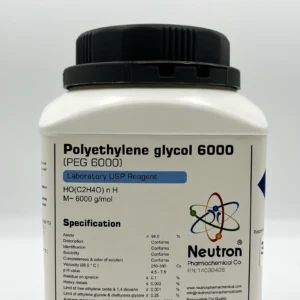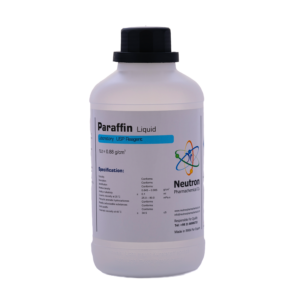دی سدیم ادتا دی هیدراته
| Formula (Hill): | C10H14N2Na2O8*2 H2O |
| Molar mass: | 372.24 g/mol |
| Bulk density: | ~700 kg/m3 |
| CAS number: | 6381-92-6 |
| HS code: | 29224995 |
| EC number: | 205-358-3 |
| Storage (temperature): | at + 15 ºC to +25 ºC |
| SDS | Available |
| RTECS | AH4410000 |
| Odour: | Odourless |
| Form: | Crystals |
| Color: | White |
| Ph value: | 4 – 5 (50g/I 20 ºC) |
| Solubility in water: | 100 g/l (20 ºC) |
| Melting point: | 110 ºC |
| Thermal decomposition | 255 ºC |
| Assay | 98.5 – 101.0 | % | |
| Description | Conforms | ||
| Solubility | Conforms | ||
| Identification | Conforms | ||
| Heavy metals | 0.005 | ||
| pH (1/20) | ≤ | 4.0 – 6.0 | % |
| Calcium | Conforms | ||
| Loss on drying | 8.7 – 11.4 | % | |
| Limit of nitrilotriacetic acid | ≤ | 0.1 | % |
Disodium EDTA Dihydrate is the dihydrated form of disodium ethylenediaminetetraacetate, a chelating agent derived from EDTA (ethylenediaminetetraacetic acid). Its chemical formula is C₁₀H₁₄N₂Na₂O₈·2H₂O. This compound appears as a white, crystalline, odorless solid, widely used for its ability to bind metal ions in various chemical and industrial processes.
🏭⚗️ Production
Disodium EDTA dihydrate is produced by the neutralization of ethylenediaminetetraacetic acid (EDTA) with sodium hydroxide in aqueous solution. The resulting disodium salt is then crystallized and dried to obtain the dihydrate form. This process is typically carried out on an industrial scale due to the compound’s broad range of applications.
🔬 Properties
Disodium EDTA dihydrate is a white, crystalline, odorless powder that is freely soluble in water but insoluble in alcohol. It functions as a highly effective chelating agent, forming stable complexes with metal ions such as calcium, magnesium, iron, and lead. It is chemically stable under standard conditions but mildly hygroscopic, absorbing moisture from the air over time. It decomposes at approximately 242 °C without a distinct melting point. A 1% aqueous solution of the compound typically has a pH between 4 and 6. Its key functional property—chelating metal ions—makes it essential for preventing unwanted reactions caused by trace metals in formulations.
🧪 Applications
-
Pharmaceuticals: Used to enhance the stability and bioavailability of formulations by sequestering metal ions that could catalyze degradation.
• Cosmetics & Personal Care: Acts as a stabilizer and preservative booster by inactivating metal ions that promote oxidation or spoilage in creams, shampoos, and lotions.
• Food Industry: Sometimes used as a preservative and stabilizer (E386) to prevent discoloration and rancidity caused by metal-catalyzed reactions, though its use is limited or regulated in some countries.
• Cleaning Products: Commonly included in detergents and surface cleaners to soften water and improve cleaning efficiency by binding hard water ions.
• Laboratory & Industrial Use: Used in complexometric titrations, metal plating, textile processing, and paper manufacturing.





